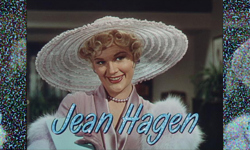It’s 10.14am in Hammersmith, foggy outside but noisy with chatter in the office, and I’m looking at two Russian cavalrymen locked in battle, their horses and sabres furiously entwined.
The painting is Cossacks, by the Russian abstract artist Wassily Kandinsky, and it’s been proffered up by the Magic Tate Ball app on my iPhone. Why? “Tate Ball senses some noise – loud boasts perhaps?”, the app informs me. “Kandinsky said ‘it is the first truly modern painting in the Tate Gallery in London’.”*
Whisking you from your workaday life into a parallel art universe is a tough ask, but that’s Magic Tate Ball’s mission – and it makes a joyful alternative to all those dull-but-essential news and messaging apps which hog your homescreen. Conjuring with five pieces of individual data – the time of day, date, ambient noise, GPS location and weather – the app considers your predicament for a second and then, with a flourish, unveils a suitable piece of art from the Tate collection. And the connections are fascinating.
You’re in Bristol? Did you know Damien Hirst was born there? (I didn’t). So here are his notorious cows in formaldehyde, Mother and Child Divided.
It’s August 27th – birthday of 60s sex symbol Tuesday Weld. Here’s Peter Blake’s pop art homage to her, Tuesday.
It’s sunny. Here’s John Singer Sargent’s fairytale-like painting of Victorian children at dusk, Carnation, Lily, Lily, Rose, completed over the long summer of 1885.
And so it goes, serving up a fresh piece of art from a 2,500-strong collection every time you shake your phone. Shake your phone? I should explain: part of this app’s appeal is its brilliantly simple but quirky interface. On loading, it presents you with a gravure illustration of a backlit bowling ball, held aloft on a hand which seems to have come straight from the sketchbooks of Da Vinci, and the instruction ‘Shake Me’.
So you do, and with a whistle of wind, the ker-ching of a cash register, and the bleat of a sheep, the Magic Tate Ball delivers its choice. (This time, it’s Edward Burra’s The Snack Bar, since you ask.) First, there’s just the artwork – a man slicing ham suggestively at a counter, a vampish woman in furs tonguing a sandwich. Then you click ‘Why?’ for the explanation (“It’s 11.04. Not long till lunch, are you feeling peckish?”) and a few notes from the Tate (“Violence and sexual tension seem to be at play” – no kidding).
And that’s it. You shake the ball again, and get a different piece of art. It’s compelling, diverting, fun, educational. So what can we learn?
First, it’s worth noting that, for all its artiness, this is a content app. At its heart are 2,500-odd pieces of visual content jostling for the browser’s interest, just as we publishers all compete to place our articles, photos, videos or whatnot into our readers’ lives. Where Magic Tate Ball succeeds is by tailoring its content to the specific circumstances of its audience, making it as local as the weather forecast and as time-sensitive as the news. The personalisation of digital content is rapidly becoming the hottest topic in online publishing, as we all recognise that readers value, engage with and share content which has been served with their individual circumstances in mind. Here is an app – a four-year-old app, even – which puts its audience’s here-and-now right at the centre of its design.
Second, there is Magic Tate Ball’s – for want of a better word – appiness. An app is, let’s remember, an application, and as such is supposed to perform a function. The best apps provide a stable, uncluttered environment where you can get something done (whether that’s catching Dragonites or trading Forex). So many content apps fail this basic test because they do nothing that a mobile-responsive website couldn’t achieve more easily: they’re just content feeds.
But Magic Tate Ball isn’t a feed; it wouldn’t work as a website. It’s a neat little art machine which – like a train planner or banking app - delivers a personalised outcome. It uses the specific virtues of a smartphone – always with you, has a microphone, you can shake it – so it feels highly intuitive. The whole user experience is over in under 60 seconds, but you keep coming back to it because it changes with you, and so earns its place on your homescreen. How many content apps can boast the same?
There are also a couple of little features to admire which encourage loyalty (and don’t we all crave more of that?). First, there’s the ‘My Art’ button on the homescreen, which quietly curates all your art discoveries – so I can easily scan back through my Hirsts, Dalis and Constables, all tagged with the time and date they were ‘divined’. I like this sense of the app as a wallet for experience, a way of looking back at micro-moments in my life.
Second, there’s a bonus feature which is only unlocked when you visit Tate Modern itself – a smart way of incentivising users into a desired action. For publishers, the equivalent audience might be subscribers, or event attendees, or newsletter signups: give us something, get something back.
Now I confess: I haven’t taken my Magic Tate Ball app to the Tate yet, so this extra level remains a tantalising mystery. But does this app make me want to go? Oh yes. A bit to unlock the bonus feature. A bit to see some of ‘my’ art – cossacks, cows and all – in the flesh. But mainly because Tate Ball makes art fun, fast and relevant – and that really is a little bit magic.
* Painted in 1910-11 and now on display on Level 2 of Tate Modern
Magic Tate Ball can be downloaded from the App Store.












